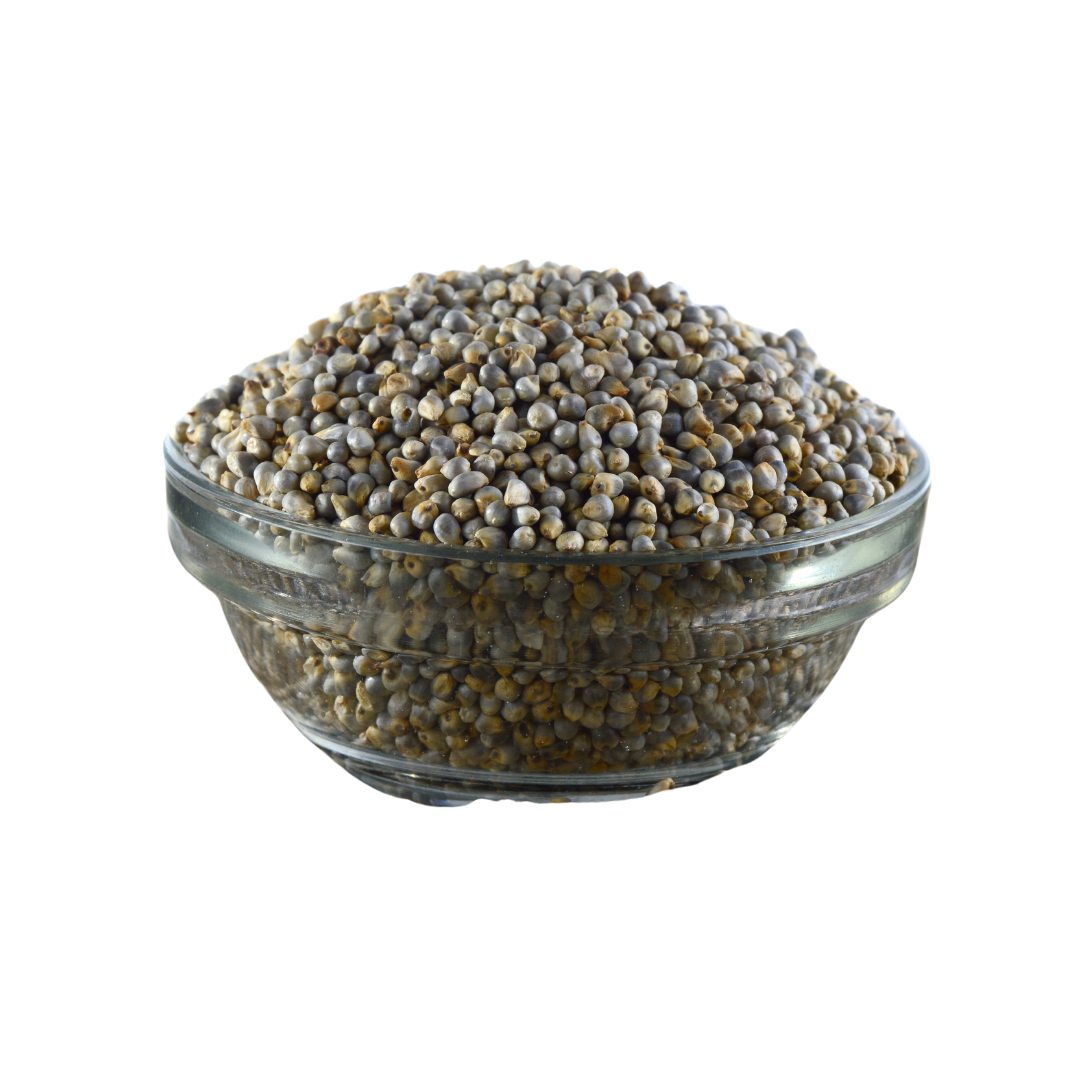
About
Pearl millet, commonly known as Bajra, is a type of small-grained, warm-season cereal crop that belongs to the Poaceae family. It is one of the oldest cultivated crops in the world, originating from Africa and India. Pearl millet is an important staple food in many parts of the world, especially in Africa and India.
Health Benefits of Pearl Millet/Bajra:
- Rich in Fiber: Pearl millet is an excellent source of dietary fiber, which promotes digestive health, reduces cholesterol levels, and regulates blood sugar levels.
- Good for heart health: Pearl millet is low in fat and high in magnesium, which is known to improve heart health by reducing blood pressure, promoting healthy blood vessels, and preventing the buildup of plaque in the arteries.
- Helps in weight management: Pearl millet is low in calories and high in fiber, making it an excellent food choice for people looking to manage their weight.
- Rich in nutrients: Pearl millet is a good source of vitamins and minerals such as iron, calcium, phosphorus, and B-complex vitamins.
List of diseases that can be cured:
- Diabetes: Pearl millet’s low glycemic index and high fiber content make it an excellent food for managing diabetes.
- Anemia: Pearl millet is a rich source of iron, which can help prevent and treat anemia.
- Cardiovascular diseases: Pearl millet’s high magnesium content can help reduce the risk of cardiovascular diseases.
- Digestive problems: Pearl millet’s high fiber content can help prevent constipation, diarrhea, and other digestive problems.
Nutritional information per serving of 50 grams of Pearl Millet/Bajra:
Macro Nutrient content per 50g serving of Pearl millet/bajra:
| Nutrient | Amount |
|---|---|
| Energy | 179 kcal |
| Carbohydrates | 37.5 g |
| Protein | 4.7 g |
| Fat | 1.5 g |
| Fiber | 3.3 g |
| Water | 7.5 g |
Vitamin content per 50g serving of Pearl millet/bajra:
| Vitamin | Amount |
|---|---|
| Vitamin A | 2 mcg |
| Vitamin B1 (Thiamine) | 0.17 mg |
| Vitamin B2 (Riboflavin) | 0.05 mg |
| Vitamin B3 (Niacin) | 1.4 mg |
| Vitamin B6 | 0.15 mg |
| Vitamin B12 | 0 mcg |
| Vitamin C | 1.2 mg |
| Vitamin D | 0 mcg |
| Vitamin E | 0.25 mg |
| Vitamin K | 0.3 mcg |
| Folate | 14 mcg |
| Biotin | 2 mcg |
Mineral content per 50g serving of Pearl millet/bajra:
| Mineral | Amount |
|---|---|
| Calcium | 29 mg |
| Iron | 1.7 mg |
| Iodine | 3 mcg |
| Zinc | 0.9 mg |
| Magnesium | 68 mg |
| Phosphorus | 95 mg |
| Potassium | 107 mg |
| Sodium | 2 mg |
| Chloride | 10 mg |
| Copper | 0.14 mg |
| Chromium | 0.6 mcg |
| Fluoride | 2 mcg |
| Molybdenum | 7 mcg |
| Manganese | 0.5 mg |
| Selenium | 3 mcg |
What is pearl millet/bajra, and where is it grown?
Pearl millet, also known as bajra, is a type of cereal grain that is widely grown in Africa and India.
What are the health benefits of consuming pearl millet/bajra?
Pearl millet/bajra is rich in nutrients and fiber, which can help improve digestion and reduce the risk of chronic diseases such as heart disease and diabetes.
Is pearl millet/bajra gluten-free?
Yes, pearl millet/bajra is naturally gluten-free and can be a great alternative grain for people with celiac disease or gluten intolerance.
How can pearl millet/bajra be prepared and consumed?
Pearl millet/bajra can be ground into flour to make bread, porridge, and other baked goods. It can also be cooked and eaten as a side dish, or used in salads and other dishes.
Is pearl millet/bajra easy to grow?
Pearl millet/bajra is a hardy crop that is well adapted to hot and dry environments, making it relatively easy to grow in many parts of the world.
What is the nutritional content of pearl millet/bajra?
Pearl millet/bajra is a good source of protein, fiber, and several essential vitamins and minerals, including iron, zinc, and magnesium.
How does pearl millet/bajra compare to other grains in terms of nutritional value?
Pearl millet/bajra is generally considered to be a more nutritious grain than wheat or rice, due to its higher protein and fiber content.
Can pearl millet/bajra be used in gluten-free baking?
Yes, pearl millet/bajra flour can be used in gluten-free baking to make bread, cakes, and other baked goods.
What are some traditional dishes that use pearl millet/bajra?
In India, pearl millet/bajra is often used to make a popular flatbread called bajra roti. In Africa, it is used to make a type of porridge known as pap or ugali.
How does pearl millet/bajra compare to other alternative grains, such as quinoa or amaranth?
Pearl millet/bajra has a distinct taste and texture compared to other alternative grains, but it is similarly nutritious and can be used in many of the same ways.
Can pearl millet/bajra be used in soups and stews?
Yes, pearl millet/bajra can be used in soups and stews to add flavor and nutrition.
Is pearl millet/bajra suitable for people following a vegetarian or vegan diet?
Yes, pearl millet/bajra is a good source of protein and can be a nutritious addition to vegetarian or vegan meals.
How should pearl millet/bajra be stored to maintain freshness?
Pearl millet/bajra should be stored in an airtight container in a cool, dry place to prevent moisture and pests from affecting the grain.
What are some common culinary uses for pearl millet/bajra?
Pearl millet/bajra can be used to make flatbreads, porridges, and even beer in some parts of the world.
Is pearl millet/bajra easy to digest?
Pearl millet/bajra is a good source of fiber, which can aid in digestion, but it may be difficult for some people to digest if consumed in large quantities.








